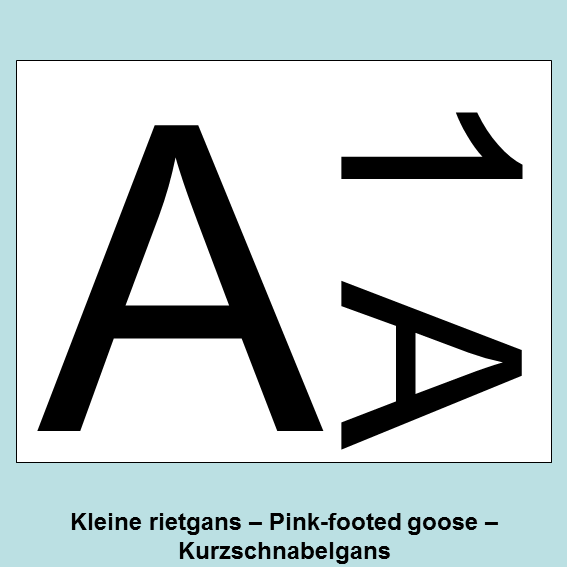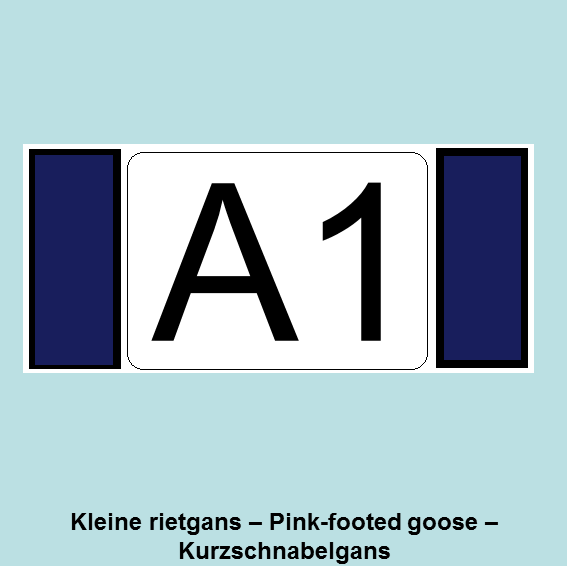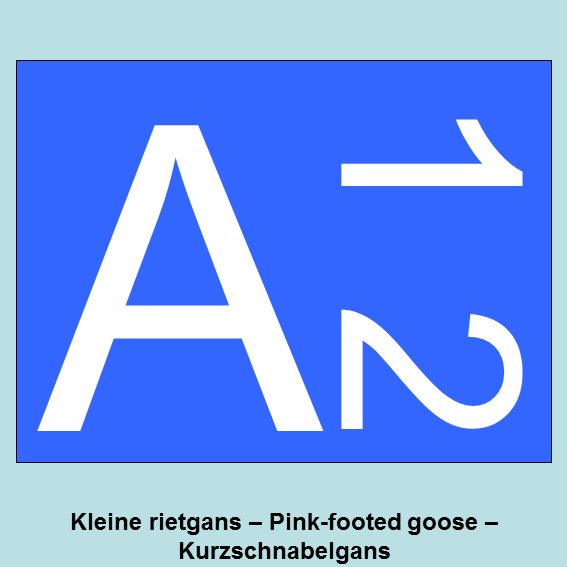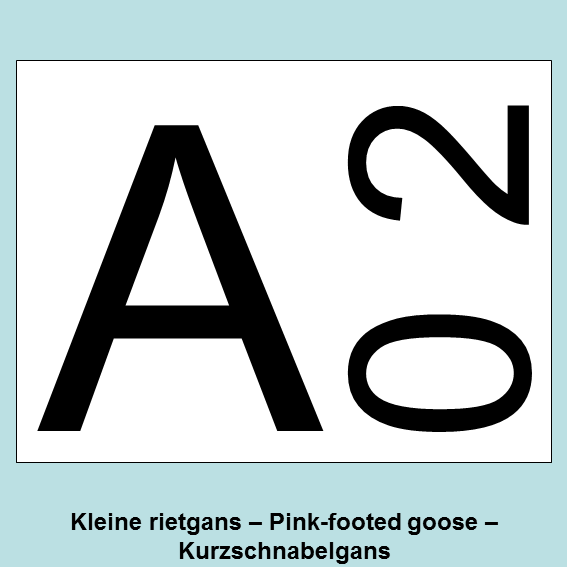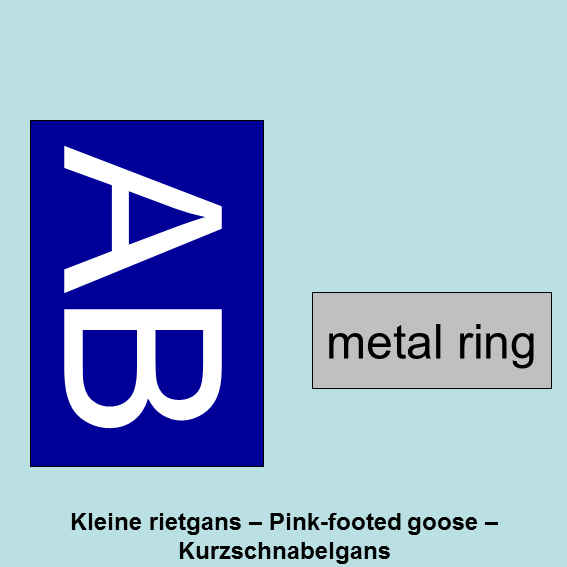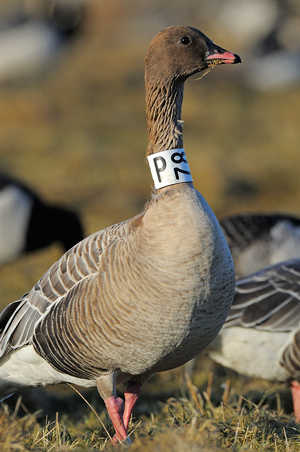Pink-footed Geese from the Svalbard breeding population have been ringed with neckbands since 1990 in the framework of a long-term research project carried out by Aarhus University in Denmark and on Svalbard. Most individuals have blue or white neckbands (accidentally yellow or black has been used). Also "difficult" letters like 'I' have been used. Neckbands always have a 3 digit code of which the latter 2 are placed at a 90° angle. The way to read the digits on the neckband is similar as in Greater White-fronted Geese, so the 2 digits that are put in 90° position are read from top to bottom. Note, however, in white neckbands, this is the other way round (only exception is codes starting with I).
When entering observations, first enter the code (e.g. A01) and then select the colour of the neckband in the dropdown menu. Note that with codes that have one 'large' digit and two smaller digits in 90° angle, always the 'large' digit should be entered first, followed by the 2 smaller digits that are placed in 90° angle. Do not use space when entering the code. When entering legrings, first start with colour, then the first digit, space, and then the second digit, so BC F is blue legring with CF. If both neckband and legring are observed, please only enter the codes of the neckband, and make a remark on the legring. A new white neckband series with black inscriptions have been put on in early May 2015 in Nord-Trøndelag, Norway: vertical A and horizontal (two digits, to be read from downside up): A-A1, B-A1, C-A1, E-A1, F-A1.
|
|
Exceptions: In Norway, two Pink-footed Geese have been ringed with black neckbands. In The Netherlands (1), Germany (1) and Sweden (2) four Pink-footed Geese have been ringed with yellow neckbands. Pink-footed Geese from the Iceland-Greenland population that winters in the UK, may (rarely) be seen on the European mainland. These birds have neckbands or legrings with other colours and can be reported at colourmarkedwildfowl@wwt.org.uk. The Svalbard-breeding population of the pink-footed goose is subject to an internationally coordinated management plan under the African-Eurasian Waterbird Agreement (AEWA). Background, reports, scientific outputs and news from the plan process can be seen at the project website: http://pinkfootedgoose.aewa.info/ (in English). Aarhus University administrates a website on current research projects related to the international management plan for the Svalbard population of the pink-footed geese. Results from the work, news items and information about the neck-banding project can be seen at the website: http://kortnaeb.au.dk/ (in Danish only). Left: Pink-footed Goose with code P78 (photo: Jesper Madsen) |
